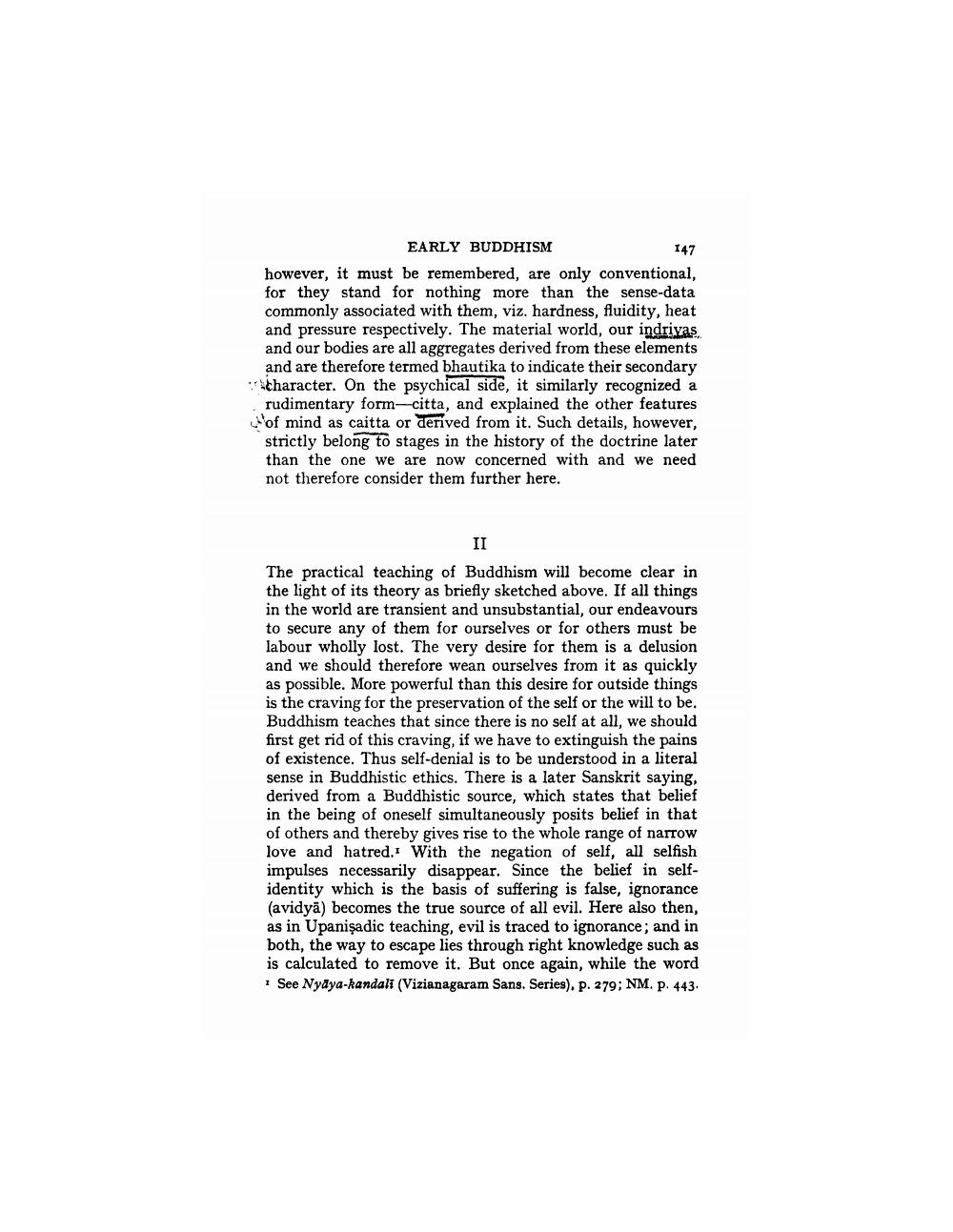________________
147
EARLY BUDDHISM however, it must be remembered, are only conventional, for they stand for nothing more than the sense-data commonly associated with them, viz. hardness, fluidity, heat and pressure respectively. The material world, our indriyas. and our bodies are all aggregates derived from these elements and are therefore termed bhautika to indicate their secondary character. On the psychical side, it similarly recognized a rudimentary form-citta, and explained the other features of mind as caitta or derived from it. Such details, however, strictly belong to stages in the history of the doctrine later than the one we are now concerned with and we need not therefore consider them further here.
The practical teaching of Buddhism will become clear in the light of its theory as briefly sketched above. If all things in the world are transient and unsubstantial, our endeavours to secure any of them for ourselves or for others must be labour wholly lost. The very desire for them is a delusion and we should therefore wean ourselves from it as quickly as possible. More powerful than this desire for outside things is the craving for the preservation of the self or the will to be. Buddhism teaches that since there is no self at all, we should first get rid of this craving, if we have to extinguish the pains of existence. Thus self-denial is to be understood in a literal sense in Buddhistic ethics. There is a later Sanskrit saying, derived from a Buddhistic source, which states that belief in the being of oneself simultaneously posits belief in that of others and thereby gives rise to the whole range of narrow love and hatred. With the negation of self, all selfish impulses necessarily disappear. Since the belief in selfidentity which is the basis of suffering is false, ignorance (avidyā) becomes the true source of all evil. Here also then, as in Upanişadic teaching, evil is traced to ignorance, and in both, the way to escape lies through right knowledge such as is calculated to remove it. But once again, while the word
See Nyaya-kandali (Vizianagaram Sans. Series), p. 279; NM. P. 443.




